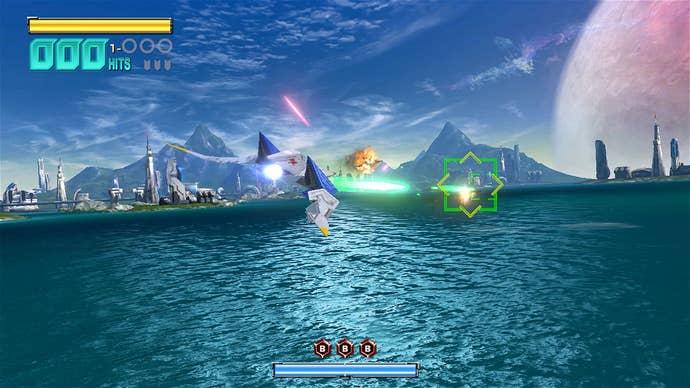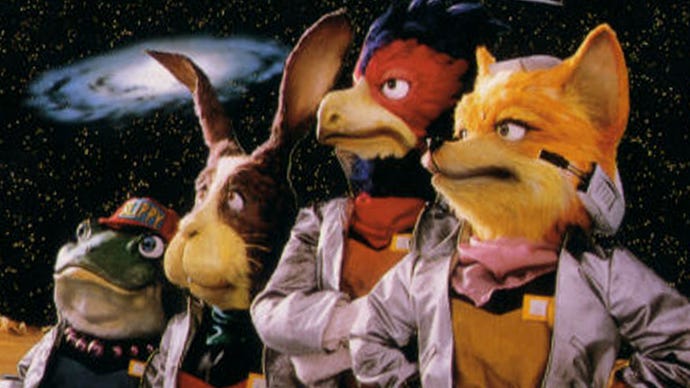As Star Fox turns 30, it’s time for a reboot that admits: it’s okay for games to be short
Star Fox is celebrating a milestone anniversary - making now as good a time as ever to admit that what makes the games truly great is also their greatest weakness.
Star Fox has a problem. It’s a problem that faces a lot of games of its type and era - titles with their roots in the arcade, in sapping cash from hapless players. Sure, Star Fox was never actually an arcade game - but the games it is directly descended from were absolutely structured in that way, designed primarily to maximize player turnover and revenue.
Today, Star Fox turns 30 years old - but it’s fair to say that for at least half of that existence, the adventures of Fox McCloud have been a little bit crap. Or, well - maybe crap is a bit harsh. Let’s call them muddled. And the reason? Well, it’s that damn problem described above - it’s an issue of structure.
You see, the best Star Fox games are short. Like I say, they’re structured like arcade games - similar in length to peers like After Burner or Space Harrier, but equally of a similar length to stuff like Time Crisis or House of the Dead. They’re designed so that they can be finished in under an hour, so that even experienced players are off the machine within a reasonable time, freeing up that control deck and coin input for a new customer. The length was designed to appeal to arcade and laundromat owners first, and players second - which is a problem in the modern gaming landscape.
Nintendo knows it, too. That’s why every Star Fox game since the turn of the millennium has had some sort of other gimmick to slow the pace and pad it out. We’ve had Zelda clones, strategy layers, and of course the dreaded on-foot sections - if not literally, then in the form of a transforming, walking mech. This stuff serves to pad out the relative brevity of the rail shooting action.
But there’s a problem. This stuff, mostly, is crap. And even when it isn’t crap - Star Fox Adventures is quite good, y’know - it’s not what I actually come to Star Fox for. This is the problem the series has. Even the Landmaster would find itself immovably wedged between this particular rock and hard place pairing.

Incidentally, this is exactly the same problem that plagued Sonic for years. The equation was different - the problem there was the relative speed at which Sonic zips through expensive-to-create environments - but the end result was the same. Pants alternative play modes designed to pad the experience out. Speed is Sonic's greatest advantage - but also his greatest weakness. The same is true for the breakneck pacing of Star Fox and other rail shooters. Thus the padding.
When Star Fox doesn’t pad things out, however, it’s magical. The fact that I can say this when only three games in the series have really followed this path really says something. In particular Star Fox 64 (Lylat Wars in Europe) is for my money one of the best and most complete gaming packages ever - but you have to go into it understanding that from pressing start to seeing credits, you’ll only play for around an hour at most.
Back in the day, that was okay; games often were short. Star Fox 64 wasn’t anemic either, though - it had multiplayer, but also hidden gateways and triggers, medals to collect, interesting story branches, multiple paths, and a couple of different permutations of its ending. As a kid, this was how I ultimately probably played Star Fox 64 just as much as I did Mario 64 - I replayed the game again and again, getting every medal, seeing every path, and learning the best ways to make levels melt. I became obsessed with chasing high scores, taking film camera snaps of the game’s end screen, scanning them, and posting them to forums.
There was a time in my life when I was genuinely a little SF64 savant, posting some of the highest scores in the world. I knew the game inside out; I’d play in a trance-like state, my lips tracing the outline of the game’s iconic voice-acted melodrama as it landed, every beat memorized. Many of those moments still landed the hundredth time through, too, because of the highly choreographed nature of on-rails games. Area 6 is still goosebump material to this day. If you know, you know.

Some people, I know, had the same experience with the now 30-year-old original on the SNES. These two games are both magical because of their simplicity (and great music), and they didn’t need any gimmicks to do so.
In the year of our lord 2023, however, it is somewhat taboo to release a game that’s a couple of hours long - and that’s the problem. I really think it shouldn’t be, as long as users know what they’re getting into, and as long as what has been built is replete with replay value - and not just in the form of a free-form multiplayer package.
30 years have passed - but I still think the core design that made Star Fox and its immediate successor great can work. The Wii U’s Star Fox Zero was dogged by terrible controls and some fairly dodgy transformer-on-foot sequences, but it at least did understand not to outstay its welcome, lasting about five hours. But honestly, I think a really good Star Fox could stand to be even shorter, if they wanted - and for 64, that may even be the secret to its success.
Star Fox needs to come back. And the first two games in the series need to be the template. We need to admit that, if it’s designed right, it’s alright for a game to be short and sweet, just like the arcade classics. “Brevity is the soul of wit”, and all that, right? Okay - I’ve quoted Shakespeare in an article about Star Fox. Definitely time to log off now. Nintendo: make a new one, and make it good, yeah? Cheers.

